Pueraria lobata and Daidzein Reduce Cytotoxicity by Enhancing Ubiquitin-Proteasome System Function in SCA3-iPSC-Derived Neurons
- PMID: 31687087
- PMCID: PMC6800904
- DOI: 10.1155/2019/8130481
Pueraria lobata and Daidzein Reduce Cytotoxicity by Enhancing Ubiquitin-Proteasome System Function in SCA3-iPSC-Derived Neurons
Abstract
Spinocerebellar ataxia type 3 (SCA3) is an autosomal dominant neurodegenerative disorder caused by a CAG repeat expansion within the ATXN3/MJD1 gene. The expanded CAG repeats encode a polyglutamine (polyQ) tract at the C-terminus of the ATXN3 protein. ATXN3 containing expanded polyQ forms aggregates, leading to subsequent cellular dysfunctions including an impaired ubiquitin-proteasome system (UPS). To investigate the pathogenesis of SCA3 and develop potential therapeutic strategies, we established induced pluripotent stem cell (iPSC) lines from SCA3 patients (SCA3-iPSC). Neurons derived from SCA3-iPSCs formed aggregates that are positive to the polyQ marker 1C2. Treatment with the proteasome inhibitor, MG132, on SCA3-iPSC-derived neurons downregulated proteasome activity, increased production of radical oxygen species (ROS), and upregulated the cleaved caspase 3 level and caspase 3 activity. This increased susceptibility to the proteasome inhibitor can be rescued by a Chinese herbal medicine (CHM) extract NH037 (from Pueraria lobata) and its constituent daidzein via upregulating proteasome activity and reducing protein ubiquitination, oxidative stress, cleaved caspase 3 level, and caspase 3 activity. Our results successfully recapitulate the key phenotypes of the neurons derived from SCA3 patients, as well as indicate the potential of NH037 and daidzein in the treatment for SCA3 patients.
Copyright © 2019 I-Cheng Chen et al.
Conflict of interest statement
The authors declare that they have no conflicts of interest.
Figures
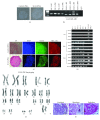
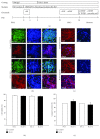
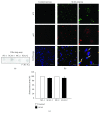
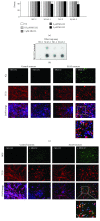
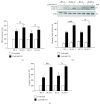
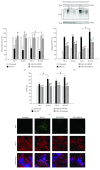
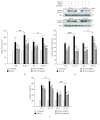
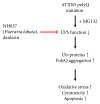
Similar articles
-
Targeting Ubiquitin Proteasome Pathway with Traditional Chinese Medicine for Treatment of Spinocerebellar Ataxia Type 3.Am J Chin Med. 2019;47(1):63-95. doi: 10.1142/S0192415X19500046. Epub 2019 Jan 7. Am J Chin Med. 2019. PMID: 30612452
-
A fine balance between Prpf19 and Exoc7 in achieving degradation of aggregated protein and suppression of cell death in spinocerebellar ataxia type 3.Cell Death Dis. 2021 Feb 2;12(2):136. doi: 10.1038/s41419-021-03444-x. Cell Death Dis. 2021. PMID: 33542212 Free PMC article.
-
CRISPR/Cas9-Targeted Deletion of Polyglutamine in Spinocerebellar Ataxia Type 3-Derived Induced Pluripotent Stem Cells.Stem Cells Dev. 2018 Jun 1;27(11):756-770. doi: 10.1089/scd.2017.0209. Epub 2018 May 18. Stem Cells Dev. 2018. PMID: 29661116
-
Toward therapeutic targets for SCA3: Insight into the role of Machado-Joseph disease protein ataxin-3 in misfolded proteins clearance.Prog Neurobiol. 2015 Sep;132:34-58. doi: 10.1016/j.pneurobio.2015.06.004. Epub 2015 Jun 27. Prog Neurobiol. 2015. PMID: 26123252 Review.
-
[Mechanisms to control degradation of polyglutamine-containing protein].Rinsho Shinkeigaku. 2003 Nov;43(11):906-8. Rinsho Shinkeigaku. 2003. PMID: 15152500 Review. Japanese.
Cited by
-
Small Molecules Inducing Autophagic Degradation of Expanded Polyglutamine Protein through Interaction with Both Mutant ATXN3 and LC3.Int J Mol Sci. 2024 Oct 4;25(19):10707. doi: 10.3390/ijms251910707. Int J Mol Sci. 2024. PMID: 39409036 Free PMC article.
-
A comprehensive review of iPS cell line-based disease modelling of the polyglutamine spinocerebellar ataxias 2 and 3: a focus on the research outcomes.Ann Med Surg (Lond). 2024 Mar 19;86(6):3487-3498. doi: 10.1097/MS9.0000000000001984. eCollection 2024 Jun. Ann Med Surg (Lond). 2024. PMID: 38846892 Free PMC article. Review.
-
Altered Metabolic Signaling and Potential Therapies in Polyglutamine Diseases.Metabolites. 2024 May 31;14(6):320. doi: 10.3390/metabo14060320. Metabolites. 2024. PMID: 38921455 Free PMC article. Review.
-
Therapeutic roles of natural remedies in combating hereditary ataxia: A systematic review.Chin Med. 2021 Jan 28;16(1):15. doi: 10.1186/s13020-020-00414-x. Chin Med. 2021. PMID: 33509239 Free PMC article. Review.
-
Polyglutamine Ataxias: Our Current Molecular Understanding and What the Future Holds for Antisense Therapies.Biomedicines. 2021 Oct 20;9(11):1499. doi: 10.3390/biomedicines9111499. Biomedicines. 2021. PMID: 34829728 Free PMC article. Review.
References
MeSH terms
Substances
LinkOut - more resources
Full Text Sources
Other Literature Sources
Research Materials

